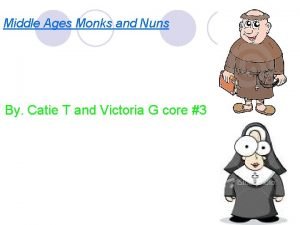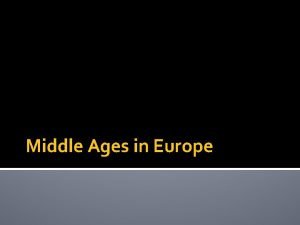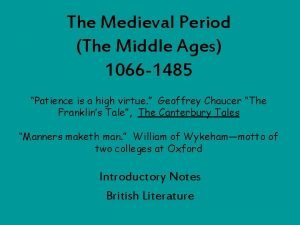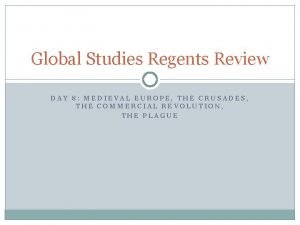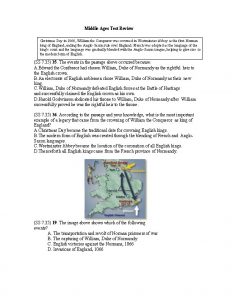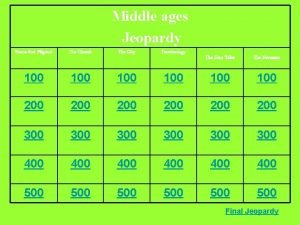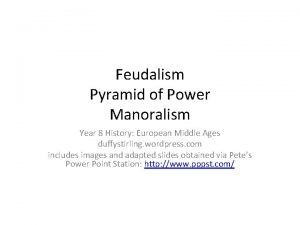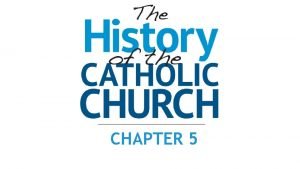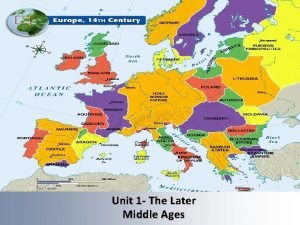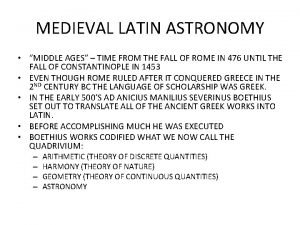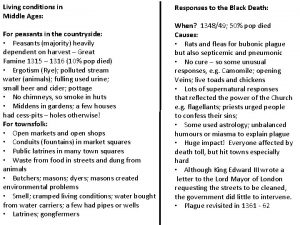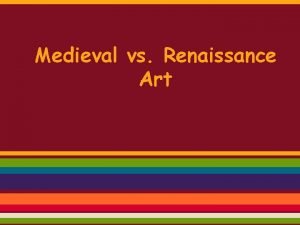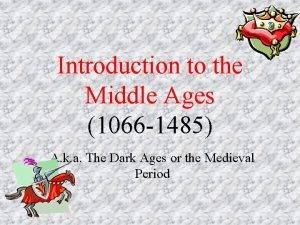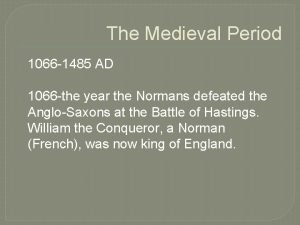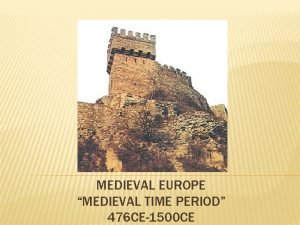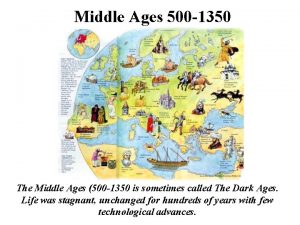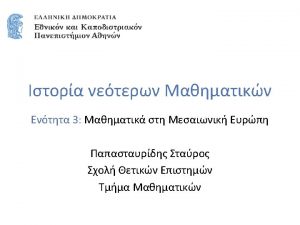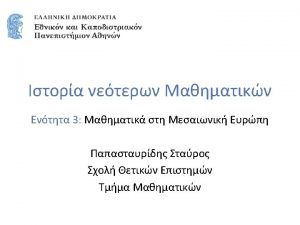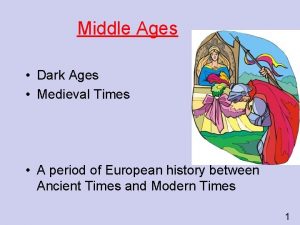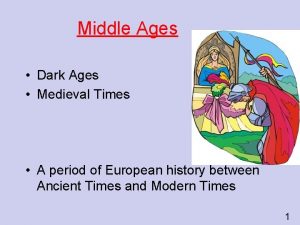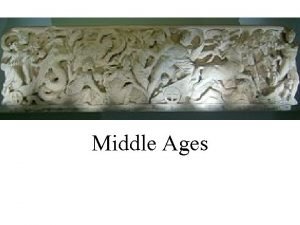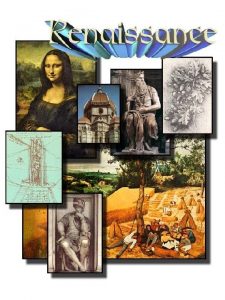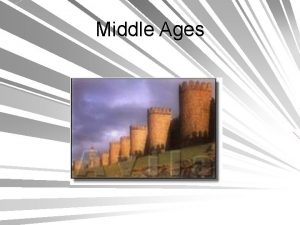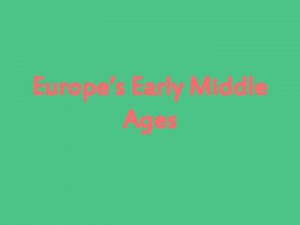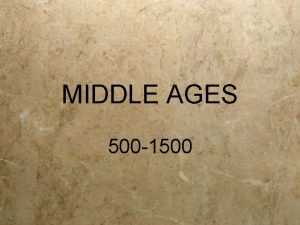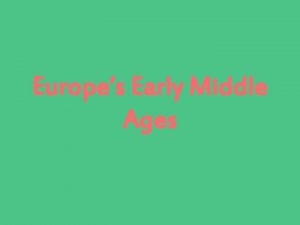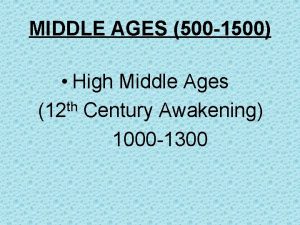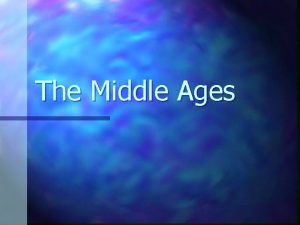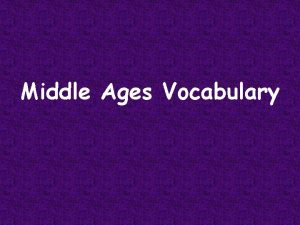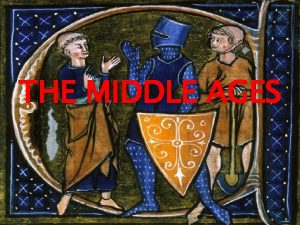The Middle Ages Medieval Period 500 CE1500 CE






















- Slides: 22

The Middle Ages Medieval Period 500 CE-1500 CE

The Middle Ages lasted for about ___ years? 1, 100 1, 500 4, 000 400 1. 2. 3. 4. 1 2 3 4 5 6 7 21 22 23 24 25 26 27 8 9 10 11 12 13 14 15 16 17 18 19 20

The events associated with the MA happened mainly in ____? Asia Rome Europe Italy 1. 2. 3. 4. 1 2 3 4 5 6 7 21 22 23 24 25 26 27 8 9 10 11 12 13 14 15 16 17 18 19 20

The MA occurred between the ___ and the ___. Roman Empire, modern times 2. Prehistoric times, modern times 3. Roman Empire, Renaissance 4. Prehistoric times, Renaissance 1. 1 2 3 4 5 6 7 21 22 23 24 25 26 27 8 9 10 11 12 13 14 15 16 17 18 19 20

The MA is known as the great rebirth of culture in Europe. True False 1. 2. 1 2 3 4 5 6 7 21 22 23 24 25 26 27 8 9 10 11 12 13 14 15 16 17 18 19 20

Which is not associated with the Middle Ages? Coliseums Castles Knights Tournaments 1. 2. 3. 4. 1 2 3 4 5 6 7 21 22 23 24 25 26 27 8 9 10 11 12 13 14 15 16 17 18 19 20

Decline of Roman Empire Wars Taxes Diseases

Germanic Invasions Overrun the West Cities fall Populations shift to rural areas for food Trade disrupted No common language Decrease in literacy and learning Church provided safety and order Germanic people life: small communities, led by chiefs, no respect for king (no taxes)

Christianity Spreads Clovis: Frankish Leader of Gaul (France) United a Kingdom & Spread Christianity Germanic people converted Monasteries- monks lived w/o possessions to serve God Convents- nuns also followed this life Became best educated communities

The European Empire Charlemagne- inherits kingdom around 800 CE Conquests reunite West into empire Crowned “emperor” by crushing attack on Pope Signified union of Germanic power & Church He spreads Christianity & establishes central government Limits noble’s authority, ruled justly

Cont…. Supports learning and culture Opened palace schools Multilingual (English, German, Italian, Spanish) Son (Louis the Pious) left 3 heirs/ all faught ▪ Ended with Treaty of Verdun- divided land by 3

Muslim Invasions Muslims enter into Spain and Sicily Bring science and math Christians fear the invasions

Lords owned land where peasants worked.

Feudal Structure Based on land exchange for protection and services (mutual obligations) Kings, Nobles, Clergy, Knights, Peasants Social Class inherited Determines prestige and power

Land King gave land to Lords give land (fiefs) to vassals (lower lords) ▪ Vassals promise loyalty and service to lords ▪ Peasants (serfs) worked on manors (estates) Knights- mounted warriors to protect lands

Manors Manor- lord’s estate Economic side of Feudalism Lord gives serfs land, shelter, protection in exchange for work Peasants: self-sufficient community Peasants pay high taxes & live harsh life Tax on grain and marriage Marriages approved by lords Had to tithe- 1/10 th of earnings Small 1 room cottages Accepted their place in society based on bible

Holy Roman Empire

Structure Different ranks of religious officials Allowed shared religious beliefs to unify Sacraments- important religious ceremonies Cannon Law- law of Church (guides conduct)

Holy Roman Empire German-Italian Empire King Otto I (Otto the Great) Forms alliance with church Most effective ruler, invades Italy for Pope Italians resent his rule/ Pope fears his power

Holy Roman Empire Pope & Emperor clash Clash of choosing clergy Lay investiture- ceremony where king appoints clergy ▪ 1075 CE Pope Gregory VII bans it ▪ Henry IV – “not pope, but false monk” ▪ Excommunicated- removed from church Compromise reached/ German power declines Concordant of Worms- church right, emperor veto Power struggles within Church + Empire split feudal states

Reform Church power weakened by: Clergy Marriages Simony- positions in Church sold by bishops Secular- worldly (non religious) king leads Church was restructured to resemble a kingdom Extended Pope’s power & Church Authority New religious orders revitalize the Church

Cathedrals Cities of God Gothic- style of architecture from Goth tribes Tall, light and used stain glass Replace Romanesque Style Built all over Europe 1170 -1270
 Dark ages vs middle ages
Dark ages vs middle ages Renaissance art vs medieval art
Renaissance art vs medieval art Early american period floral design
Early american period floral design Middle ages
Middle ages Nuns in the middle ages
Nuns in the middle ages Manorialism def
Manorialism def Medieval time
Medieval time Art emerging europe ppt
Art emerging europe ppt Egyptian floral design time period
Egyptian floral design time period What were two indirect results of the crusades
What were two indirect results of the crusades Christmas day 1066
Christmas day 1066 How is this
How is this Sacred music in the middle ages
Sacred music in the middle ages Middle ages jeopardy
Middle ages jeopardy Late middle ages timeline
Late middle ages timeline Manorialism vs feudalism
Manorialism vs feudalism Similarities between middle ages and renaissance
Similarities between middle ages and renaissance Map of europe in middle ages
Map of europe in middle ages Astronomy in medieval times
Astronomy in medieval times Living conditions in the middle ages
Living conditions in the middle ages Medieval art vs renaissance art
Medieval art vs renaissance art The middle ages 1066 to 1485 unit test closed book
The middle ages 1066 to 1485 unit test closed book The middle ages 1066-1485 unit test
The middle ages 1066-1485 unit test




